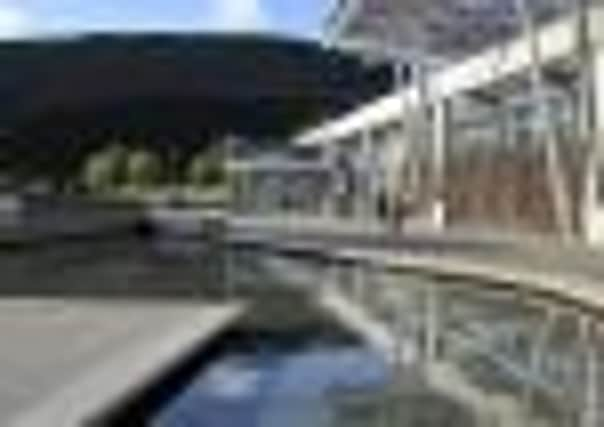Controversial anti-terror ‘bothy’ set to get go-ahead at Holyrood


The free-standing pavilion opposite Holyrood Palace, which is predicted to cost up to £5 million, has been ordered to beef up security at the parliament, despite a string of extra measures being introduced since it opened nearly eight years ago.
Critics have branded the new building an “unpleasant intrusion”, “an architectural representation of unjustified paranoia”, and an eyesore that will destroy Enric Miralles’ original architectural vision for the site.
Advertisement
Hide AdAdvertisement
Hide AdArchitects who worked on the original complex are among those to speak out against the plans, as well as Edinburgh City Council’s own “design tsar”, who has been leading efforts to improve the look of the Royal Mile.
However the council’s planning officials are recommending the extension gets the go-ahead this week, claiming the proposal is only a “minor addition” which would not detract from its look.
The new extension – aimed at thwarting attempts by possible suicide bombers to blow up Holyrood – will see all visitors screened before they enter the main building.
The parliament has previously spent £223,000 on a new roundabout, £300,000 on turnstiles and £1.5m on bollards and benches outside the building after specialist advice from the police and MI5.
Edinburgh-based Lee Boyd Architects has won a £600,000 design competition for the extension. The original Spanish architects who worked on the building, EMBT, did not even make the shortlist.
Michael Duncan, who was one of the original project directors, said the proposed extension was the equivalent of building a “bothy” next to the Royal Scottish Academy on Princes Street.
He added: “Already the civic-ness and use of the public space have been degraded by the addition of countless bollards peppering the space. On the Canongate there is a new fierce line of ‘defences’.
“Public entrances originally conceived of as welcoming are barricaded and turnstiled. To add to this spectacle of hostility, these proposals would severely reduce the width of the public space at its most critical point.
Advertisement
Hide AdAdvertisement
Hide Ad“It must surely be possible to contain alterations to security within the existing building footprint.”
Gordon McGregor, another architect who worked on the original project, called the proposed extension “vandalism”. Riccardo Marini, the council’s urban design leader, said he wanted Historic Scotland to instigate a formal listing of the parliament building to protect it from future intrusions.
“This is a world-class building and I am very saddened at what is happening to it. At the very least, the parliament should have gone back to the original architects.”
But John Bury, the council’s head of planning, insisted: “The minor alterations proposed will not interfere with the aspirations for the world heritage site.”